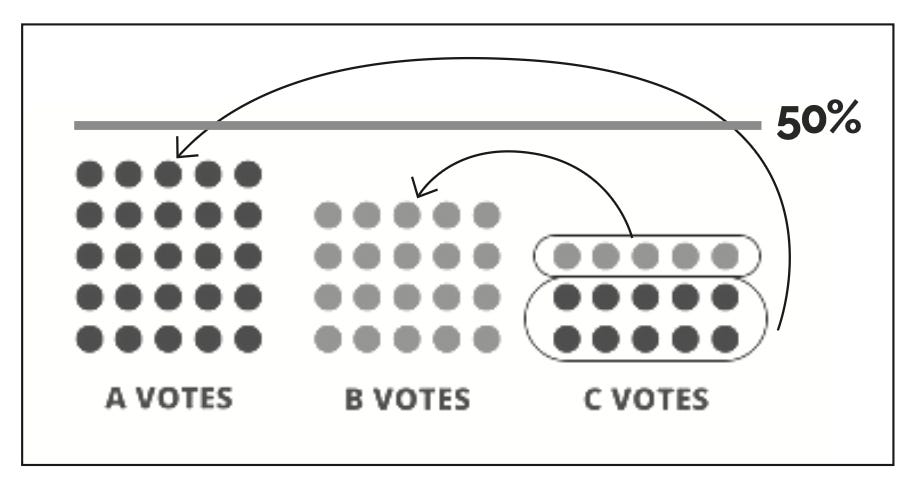Reducing the Rank-Or
Today's quote, courtesy of John Adams: "Democracy never lasts long. It soon wastes, exhausts, and murders itself. There never was a democracy yet that did not commit suicide."
America is deliberately tearing itself apart. We spend billions on political ads expressly designed to make us hate each other. Both traditional and social media pile on, pushing America to an emotional boiling point. Round-the-clock rancor. Producing rage-filled voters. Who make mistakes. Huge, future-threatening mistakes.
But first, our Monday morning tone-setting song:
Then and now
In 1960, Kennedy and Nixon spent a combined $3 million on television ads; in 2024, media ad spending topped $15 billion. Over the five 1964-1980 Presidential elections, only one state (Goldwater’s AZ) voted consistently for the same party; now, 40+ states are firmly in one camp. In 1978, twenty-five states (AK, AZ, CA, CT, DE, ID, IL, IN, MA, MD, MI, MN, MO, NE, NV, NJ, NY, ND, NC, RI, SC, TN, TX, VT, VA) had split U.S. Senate delegations; today, just three (ME, PA, WI). All but two Senators approved Reagan’s Scalia nomination and all but four approved Clinton’s RBG nomination. Today, SCOTUS nominations are a party-line Armageddon.
In a nation locked into partisan corners, an elected official’s biggest fear is losing their primary. All it takes is one stray vote, so extreme views rule. Also, our two-party system means credible third-party candidates are destined for the Ralph Nader/Jill Stein Hall of Shame. SCOTUS is making it worse. A dysfunctional Congress won’t address its dysfunctionality. Gridlock blocks Constitutional amendments. It’s bad.
But . . . something can be done.
So let me explain America’s best, and maybe last, hope for preserving our democracy: Ranked Choice Voting (RCV). Even better, the Democratic Party, with a push from us, can lead the way – resurrecting its dismal brand in the process.
What is Ranked Choice Voting?
Ranked Choice Voting (RCV) lets voters rank candidates, and then dynamically re-allocates the votes for non-viable candidates. If no candidate wins a first-round majority, the last-place candidate is eliminated, with their votes reassigned to each supporter’s second choice. Rinse and repeat until a surviving candidate has a majority.
Consider an election with three candidates drawing meaningful support:
In a plurality-wins election, Candidate A prevails by a squeaky-slim 537 votes. With RCV, “spoiler” C’s 97,488 votes are re-allocated, giving Candidate B a 13,000 vote win. Welcome to Florida’s Bush v. Gore election, with Ralph Nader’s 97,488 history-altering votes.
In general elections, RCV has myriad advantages. It favors candidates who attract second-choice votes, rewarding civility and centrism while penalizing polarizing extremists. Third-party candidates run without fear of being the spoiler. It helps assauge people’s “my vote doesn’t matter” concern. It eliminates costly run-offs, like the $400 million Georgia spent to conduct U.S. Senate run-offs six weeks after the November, 2020 election. And RCV can break a party’s stranglehold, as when Mary Peltola flipped Alaska’s Congressional seat after five decades of R control.
What We Can Do?
RCV has reached D and R voting processes in a few states (AK, HI, KS, IN, ME, MO, UT, VA, WY). It’s not partisan. But it’s still in limited use. The biggest issue is voter education. People fear change, even if it’s highly advantageous.
While the Democratic Party can’t single-handedly transform each state’s general elections into RCV processes, it can lead the way. Imagine a bold DNC pushing every state party to adopt RCV for their Democratic primaries. Get started in 2026. If you don’t use RCV for your 2028 primaries, your delegation and primary tallies won’t be recognized. Educate voters. Draw media attention. Pull in disengaged voters. Nominate the strongest general-election candidates. Demonstrate to America that the Democratic Party stands for bold, innovative progress, and shares America’s disgust with the status quo. Send this powerful message: “We’ll kick ass to reduce the hate, division, and polarization caused by our failed election processes.”
One other advantage. Just fast forward to the 2027/2028 Democratic Party primary, which will have a crazy-crowded field along the lines of New Hampshire’s in 2020. Absent RCV, a candidate with just 15% of the vote could be the plurality winner. So like in 2019, many candidates will sprint to the far left to win the votes of those most likely to turn out. There’s every chance the Democratic Party will nominate a candidate unlikely to win the General Election. Ugh!
What Can You Do?
1. Add your own take and forward this note to a) DNC Chair Ken Martin (kenmartinmn@gmail.com), b) elected Democrats you have clout with, and c) your state’s DNC members (if you can figure out who they are).
2. For those pesky fund-raising calls, use this auto-reply on your phone: “I’m not donating until the Democratic Party adopts Ranked Choice Voting for its primaries.” Money matters.
3. Check out Unite America’s great work to promote Ranked Choice Voting. If you donate, I’ll match. Just let me know what you gave: (tdintersmith@gmail.com).
4. Forward this note to your friends, encouraging them to join in.
Broad adoption of RCV is doable. It’s bold. The Democratic Party can shine as a leader in pushing for sensible measures that help a more civil America make real progress. Because more of the same will sink America.
Nervously yours,
Ted






